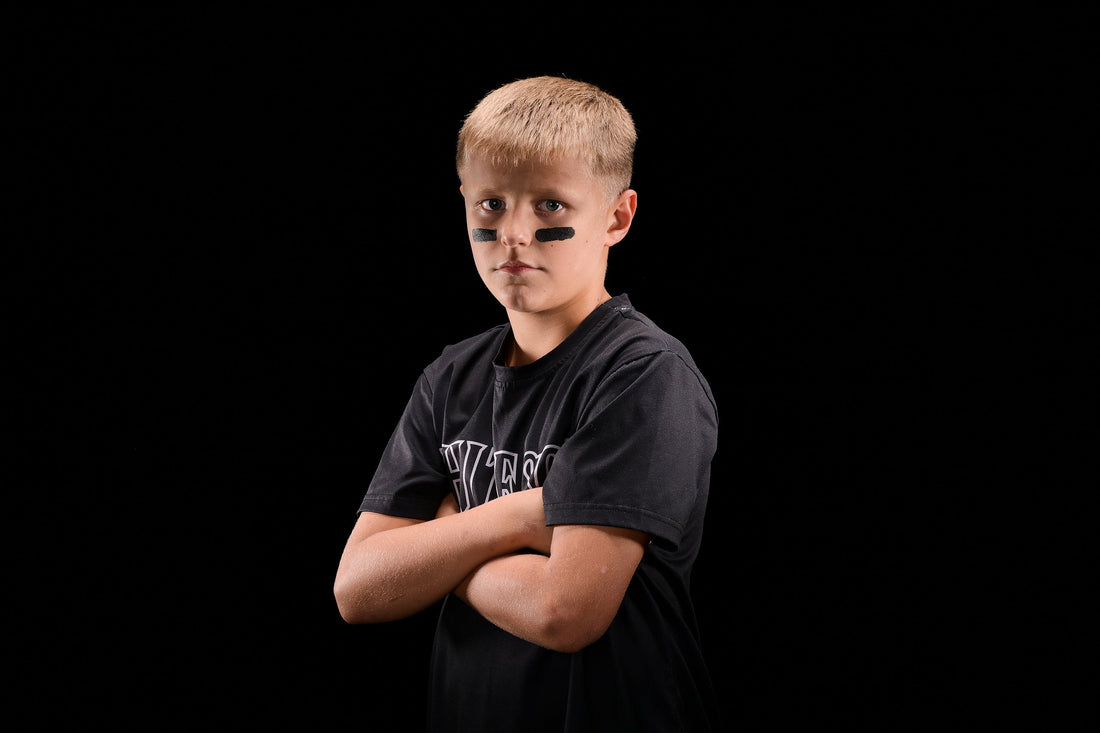
The Science Behind Eye Black: Does It Really Work?
Daniel ReedEye black has become an iconic part of sports, particularly in football, baseball, and lacrosse, and softball. From classic black grease to modern adhesive strips, athletes have relied on eye black for decades. But does it actually work? Let's dive into the science behind eye black and what makes it a staple for competitive players looking for an edge.
How Eye Black Works
Eye black is designed to reduce glare and improve visual contrast by absorbing light. When bright sunlight or stadium lights hit the skin under the eyes, light can reflect off the skin and into the eyes, potentially affecting an athlete’s ability to track objects like a ball in motion. The dark pigmentation of eye black reduces this reflection, allowing athletes to focus more clearly on their surroundings.
The Science Behind Light & Vision
The human eye processes light by capturing it through the cornea and focusing it onto the retina. In bright conditions, excessive light can scatter within the eye, reducing an athlete’s ability to detect objects against their background. This is where contrast sensitivity comes in—the ability to distinguish objects of different brightness levels. Athletes with high contrast sensitivity can react more quickly to fast-moving objects, making it an essential visual skill in sports.
Comparing Eye Black to Other Anti-Glare Methods
While eye black is a popular choice, athletes also use other methods to reduce glare:
- Visors: These protect against direct sunlight but may not block reflected light from the cheeks.
- Sunglasses: While effective, they darken overall vision, which can reduce reaction time.
- Tinted Eye Shields: These help but can distort color perception and may not be allowed in all leagues.
Eye black offers a unique advantage because it absorbs incidental light without changing the brightness or color perception of the object being tracked.
Historical Context: From Burnt Cork to Modern Eye Black
The origins of eye black trace back to early baseball and football players who experimented with ways to cut glare. Babe Ruth is believed to have been one of the first professional athletes to use burnt cork to darken the area under his eyes in the 1930s. NFL player Andy Farkas helped popularize the trend in football in the 1940s. Over time, players switched from homemade burnt cork mixtures to commercial grease formulas. In the early 2000s, adhesive strips became popular due to their ease of use and clean removal. Today, players even customize their eye black with logos and messages, making it as much a statement of personality as it is a performance tool.
The MythBusters Test
The popular TV show MythBusters put eye black to the test to determine whether it genuinely improves vision. Their findings showed that while eye black does not completely eliminate glare, it does enhance contrast sensitivity. This means athletes can better differentiate between light and dark areas, which helps in tracking fast-moving objects, especially in bright conditions. The results provided some scientific backing for the long-standing belief of countless athletes that eye black offers a competitive advantage.
Why Athletes Swear by It
Despite the debate over its effectiveness, athletes continue to use eye black for several reasons:
- Psychological Advantage – Many players view eye black as part of their game-day ritual, giving them a sense of confidence and intensity.
- Tradition – The use of eye black stands as a symbol of toughness and focus in sports.
- Customization – Athletes often use eye black to create unique looks, whether it's traditional lines or intricate designs.
Final Verdict: Is It Worth It?
While eye black may not completely eliminate glare, the MythBusters test confirmed that it enhances contrast sensitivity, making it a useful tool for athletes to keep in their toolboxes. Beyond its functional benefits, eye black remains a strong psychological tool, helping athletes feel prepared and confident. Whether for performance, tradition, or style, eye black continues to be a game-day essential for many players.
The Benefits of Swag Stick
Not all eye black products are created equal, and Swag Stick is setting a new standard in the game. Here’s why athletes are making the switch from traditional eye black to Swag Stick:
- Smudge-Proof & Sweat-Resistant – Unlike grease-based eye black that can smear and run when you sweat, Swag Stick stays in place throughout the game, ensuring maximum performance without distractions.
- Easy Application & Removal – Traditional eye black can be messy to apply and difficult to remove. Swag Stick’s water-based formula goes on smoothly with a no-mess applicator and wipes off easily without harsh scrubbing.
- Lightweight & Breathable – Unlike grease-based products that clog pores and feel heavy on the skin, Swag Stick is designed to be lightweight, breathable, and comfortable for all-day wear.
- Zero Grease Formula – Many eye black products leave a greasy residue, which can feel uncomfortable and lead to breakouts. Swag Stick’s formula is non-greasy and non-comedogenic, making it a better choice for athletes concerned about skin health.
- Versatility & Customization – Swag Stick allows players to create bold, clean designs that last, making it the perfect choice for athletes who want both function and style on the field.
For athletes who want the best of both worlds—performance and convenience—Swag Stick is an ideal upgrade from traditional eye black.
